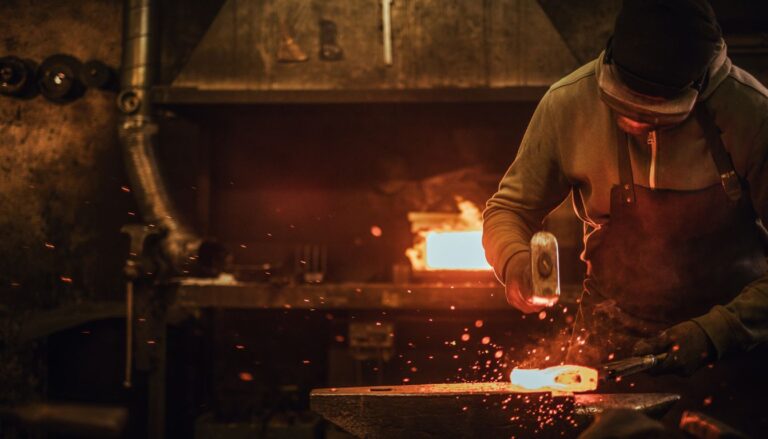Imagine a human tower rising several stories high, built not with bricks and mortar, but with people standing on each other’s shoulders. This incredible feat of strength, balance, and teamwork is called a castell, and it’s one of the most spectacular traditions in Catalonia, a region in northeastern Spain.
Castells, which means “castles” in Catalan, are human towers that can reach up to ten levels high. They’re not just an impressive acrobatic display – they’re a powerful symbol of Catalan culture and unity. These towers bring together people of all ages and backgrounds, working together to achieve something truly amazing.
In this article, we’ll explore the world of castells: their history, how they’re built, their cultural significance, and why they continue to captivate people around the world. Whether you’re planning a trip to Catalonia or just curious about unique cultural traditions, understanding castells offers a fascinating glimpse into the strength and spirit of Catalan culture.
Table of Contents
The History of Castells
The story of castells begins over 200 years ago in the town of Valls, near Tarragona in southern Catalonia. Here’s a quick timeline of how castells developed:
- Late 18th century: The first castells appeared as an evolution of a traditional Valencian dance called the “Muixeranga.”
- Early 19th century: Castells began to spread to other towns in southern Catalonia.
- Mid-19th century: Different groups, called “colles,” started competing to build the highest and most complex towers.
- Early 20th century: Castells declined in popularity due to industrialization and political changes.
- 1960s-1970s: A resurgence of interest in castells began, spreading to more areas of Catalonia.
- 1980s-present: Castells have grown in popularity and complexity, becoming a symbol of Catalan identity.
Today, castells are performed at festivals and competitions throughout Catalonia, and they’ve even spread to other parts of Spain and beyond. They’ve gone from a local tradition to a globally recognized cultural phenomenon.
How Castells Are Built

Building a castell is a complex process that requires careful planning, strength, and teamwork. Here’s a step-by-step look at how these human towers come together:
- Pinya formation: The base of the tower, called the “pinya,” is formed. This is a dense group of people who provide support and act as a safety net.
- Lower levels: Strong individuals form the first few levels of the tower, creating a stable foundation.
- Middle levels: Lighter individuals climb up to form the middle part of the tower.
- Upper levels: The smallest and lightest members, often children, climb to the top levels.
- Crowning: The youngest and smallest climber, called the “enxaneta,” scrambles to the very top to complete the castell.
- Descent: Once the tower is complete, the participants carefully climb down in reverse order.
The entire process takes just a few minutes, but it’s the result of months of practice and preparation.
The Structure of a Castell
A castell isn’t just a random pile of people – it has a specific structure with different roles:
- Pinya: The wide base that supports the entire structure.
- Tronc: The “trunk” of the tower, made up of several levels of people standing on each other’s shoulders.
- Pom de dalt: The “top bunch,” usually consisting of three levels of children.
- Enxaneta: The smallest child who climbs to the very top and raises their hand to signal the completion of the castell.
Each part of the castell is crucial, from the strong base to the brave child at the top. It’s a perfect example of how teamwork can achieve incredible results.
Types of Castells
Not all castells are the same. There are many different types, varying in height and complexity. Here are some common types:
- Pilar: A single column of people, one on top of another.
- Torre: A tower with two people per level.
- Tres de: Three people per level.
- Quatre de: Four people per level.
- Cinc de: Five people per level.
The number of levels is added to the name. For example, a “Quatre de vuit” is a tower with four people per level and eight levels high. The most complex castells can have up to ten levels!
The People Behind the Towers
Castells bring together people from all walks of life. Here are some of the key roles:
- Cap de colla: The leader who directs the building of the castell.
- Baixos: The strongest members who form the base of the tower.
- Crosses: People in the middle levels of the tower.
- Canalla: The children who climb to the highest levels.
- Enxaneta: The child who crowns the tower.
- Supporters: Those who form the pinya and provide moral support.
One of the most remarkable things about castells is how they include people of all ages, from young children to grandparents. Everyone has a role to play, making it a true community activity.
Training and Preparation
Building castells isn’t something you can do without practice. It takes a lot of preparation:
- Physical training: Members work on strength, balance, and flexibility.
- Technique practice: Each role in the castell requires specific skills that need to be perfected.
- Team building: Since trust is crucial, teams spend time building strong relationships.
- Safety drills: Teams practice safe climbing and falling techniques.
- Nutrition: Proper diet is important, especially for those in key positions.
Colla members often practice several times a week, especially leading up to important performances or competitions.
Castells in Catalan Culture

Castells are more than just an impressive physical feat – they’re an important part of Catalan culture:
- Festivals: Castells are a key part of many local festivals throughout Catalonia.
- Symbol of unity: They represent the Catalan values of teamwork, courage, and community spirit.
- Cultural pride: Castells are a source of pride for many Catalans, showcasing their unique heritage.
- Social gatherings: Castell events are often social occasions, bringing communities together.
- Educational tool: Many schools in Catalonia teach about castells as part of cultural education.
The phrase “Fer pinya,” which literally means “to make a pinya” (the base of a castell), is used in everyday Catalan to mean “working together” or “showing solidarity.”
Safety and Modern Adaptations
While castells are exciting, safety is a top priority. Here’s how safety is ensured:
- Helmets: Children in the upper levels wear specially designed helmets.
- Medical teams: Trained medical staff are always present at castell events.
- Proper technique: Climbers are taught how to fall safely if necessary.
- Strong base: The pinya acts as a safety net, cushioning falls and providing support.
- Height limits: There are restrictions on how high towers can be built, based on the team’s skill level.
Modern technology has also been used to study castells and improve safety, including computer simulations and biomechanical analysis.
Castells Competitions
While castells are often performed at festivals, there are also competitions:
- Concurs de Castells: The biggest competition, held every two years in Tarragona.
- Scoring system: Points are awarded based on difficulty, height, and whether the castell is successfully completed.
- Rivalry: There’s friendly competition between different colles (teams).
- Prizes: While there are trophies, the main reward is pride and recognition.
- Atmosphere: Competitions are exciting events with thousands of spectators.
These competitions help push the boundaries of what’s possible in castell building, while also preserving and promoting the tradition.
Castells as Intangible Cultural Heritage
In 2010, UNESCO recognized castells as an Intangible Cultural Heritage of Humanity. This means:
- Global recognition: Castells are acknowledged as an important part of human culture.
- Preservation: There’s a commitment to keeping the tradition alive.
- Promotion: Efforts are made to share castells with a wider audience.
- Research: Studies are conducted to better understand and document the tradition.
- Pride: This recognition is a source of pride for the Catalan people.
This UNESCO status has helped bring castells to the attention of people around the world, increasing interest in this unique tradition.
Conclusion: The Enduring Spirit of Castells
Castells are much more than just an impressive spectacle. They embody the spirit of Catalan culture – strength through unity, the importance of teamwork, and the power of community. From their humble beginnings in a small town to their recognition as a global cultural treasure, castells have come to represent the resilience and creativity of the Catalan people.
These human towers remind us that when people work together, they can achieve amazing things. They show us that everyone, from the strongest adult to the smallest child, has an important role to play in supporting each other and reaching new heights.
Whether you’re lucky enough to see a castell in person or just learning about them from afar, these human towers offer a powerful lesson in cooperation, trust, and the incredible things humans can accomplish when they work as one. In a world that often feels divided, castells stand as a breathtaking symbol of what we can achieve when we come together.
Discover the must-visit cultural destinations of Catalonia
You can learn more about castells and their UNESCO Intangible Cultural Heritage status













